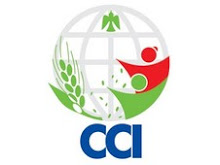"I had reason and occasion to educate myself about Vatican II during the
past year and a half while working on a book, and I found it a
tremendously affirming, stimulating, and inspiring exercise," writes Ken
Trainor at US Catholic.
"With the 50th anniversary of the opening of Vatican II looming next year (October 11, 2012), everyone has just enough time to rediscover this long-ignored and/or taken-for-granted council.
"In fact, I urge all Catholics--conservative, moderate and progressive--to read up on this amazing convocation, called by many the most important religious event of the 20th century. I think you’ll find it has much to say to us still, not just in the documents themselves, but in the actions that produced those documents. There is much, much more to the story of Vatican II than the documents themselves, though more conservative Catholics will try to tell you otherwise," Trainor argues pointing to a list of valuable books for reading up on Vatican II.
FULL ARTICLE
One man's guide to reading on Vatican II (US Catholic)
"With the 50th anniversary of the opening of Vatican II looming next year (October 11, 2012), everyone has just enough time to rediscover this long-ignored and/or taken-for-granted council.
"In fact, I urge all Catholics--conservative, moderate and progressive--to read up on this amazing convocation, called by many the most important religious event of the 20th century. I think you’ll find it has much to say to us still, not just in the documents themselves, but in the actions that produced those documents. There is much, much more to the story of Vatican II than the documents themselves, though more conservative Catholics will try to tell you otherwise," Trainor argues pointing to a list of valuable books for reading up on Vatican II.
FULL ARTICLE
One man's guide to reading on Vatican II (US Catholic)















